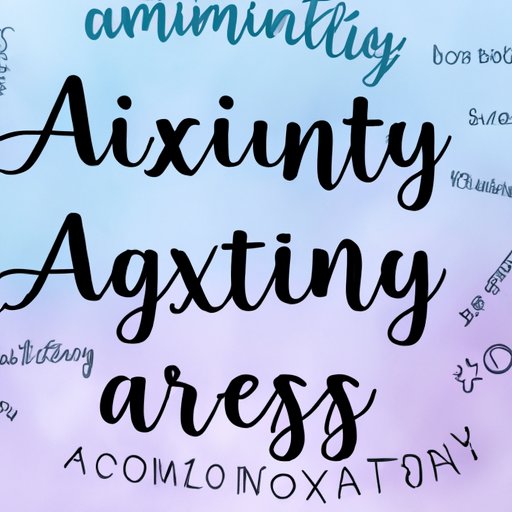I. Introduction
Anxiety is a normal human emotion that acts as an alarm system in response to danger or stress. However, sometimes anxiety can arise for seemingly no reason, which can be incredibly distressing and overwhelming to deal with. It’s important to understand that anxiety is a complex condition that is influenced by various factors, including biology, genetics, personality, and environment. In this article, we will explore why you might be anxious for no reason and provide practical steps to manage it.
II. Exploring the Science Behind Anxiety: Understanding the Brain and its Reactions
The brain response to anxiety is complex and involves a network of structures and chemicals. The amygdala, hippocampus, and prefrontal cortex are just a few of the brain regions involved in anxiety. The amygdala is responsible for alerting the body to potential threats and triggers the “fight or flight” response. The hippocampus plays a crucial role in memory consolidation, and the prefrontal cortex is responsible for emotional regulation.
Neurotransmitters, such as serotonin, dopamine, and norepinephrine, also play a significant role in anxiety. These chemicals can become imbalanced, causing symptoms such as nervousness, irritability, and sleep disturbances. Additionally, genetics and personality traits can influence anxiety, with some individuals being more prone to anxiety due to their biology and upbringing.
III. Identifying Triggers: Practical Steps to Recognize and Manage Anxiety
Triggers are external or internal factors that cause anxiety symptoms. Identifying and managing triggers is a crucial aspect of coping with anxiety. Common triggers include stressful events, trauma, relationship problems, financial concerns, and health issues. Techniques like journaling, self-reflection, and therapy can be useful in identifying triggers. Once triggers are recognized, managing them can involve a range of techniques, including relaxation techniques, prioritizing self-care, and implementing positive lifestyle changes.
IV. Breaking the Stigma: Talking About Anxiety with Loved Ones and Professionals
Mental health conditions like anxiety can be stigmatized, leading to feelings of shame and isolation. It’s essential to break down the stigma surrounding anxiety and other mental health conditions to encourage open and honest communication. Talking about anxiety with loved ones and professionals can provide a sense of relief and reduce the burden of coping alone. Starting a conversation about anxiety can be daunting, but it’s essential to know that support is available.
V. Self-Care Strategies: Building Resilience and Coping Mechanisms for Anxiety
Self-care strategies can play a significant role in managing anxiety symptoms. Lifestyle changes like regular exercise, healthy eating, and quality sleep can help reduce stress levels and boost mental well-being. Relaxation techniques like deep breathing, meditation, and yoga can also be useful in reducing anxiety symptoms. Building resilience and healthy coping mechanisms can involve practicing self-compassion, pursuing hobbies and interests, and developing a positive outlook on life.
VI. Effects of Our Environment: How Social and Environmental Factors Cause Anxiety
The impact of environment and culture on anxiety cannot be ignored. Social factors, such as discrimination, poverty, and social isolation, can contribute to anxiety symptoms. Environmental factors, such as pollution and natural disasters, can also cause anxiety. Managing anxiety caused by external factors can involve exploring resources available in the community, working to address social issues, and taking practical steps to protect the environment.
VII. The Power of Mindfulness: Techniques to Help Reduce Anxiety and Live in the Present Moment
Mindfulness is a powerful technique that involves focusing on the present moment without judgment or distraction. Mindfulness can help reduce anxiety symptoms by promoting relaxation and acceptance. Techniques such as deep breathing, body scan, and visualization can be useful in practicing mindfulness. Benefits of mindfulness for anxiety include increased self-awareness, better emotional regulation, and enhanced overall well-being.
VIII. Conclusion
Anxiety can be a challenging condition to manage, but it’s essential to remember that support and resources are available. In this article, we’ve explored the science behind anxiety, identified triggers, discussed breaking the stigma surrounding anxiety, provided self-care strategies, examined the impact of environments and cultures on anxiety, and uncovered the power of mindfulness to reduce anxiety symptoms. Remember that it’s okay to seek help if you’re struggling with anxiety, and there’s no shame in talking about mental health.
Our goal is to equip you with the tools you need to manage anxiety and find balance in your life. Remember to take care of yourself and prioritize your mental well-being. With time, patience, and diligence, you can reduce anxiety symptoms and lead a fulfilling and happy life.
